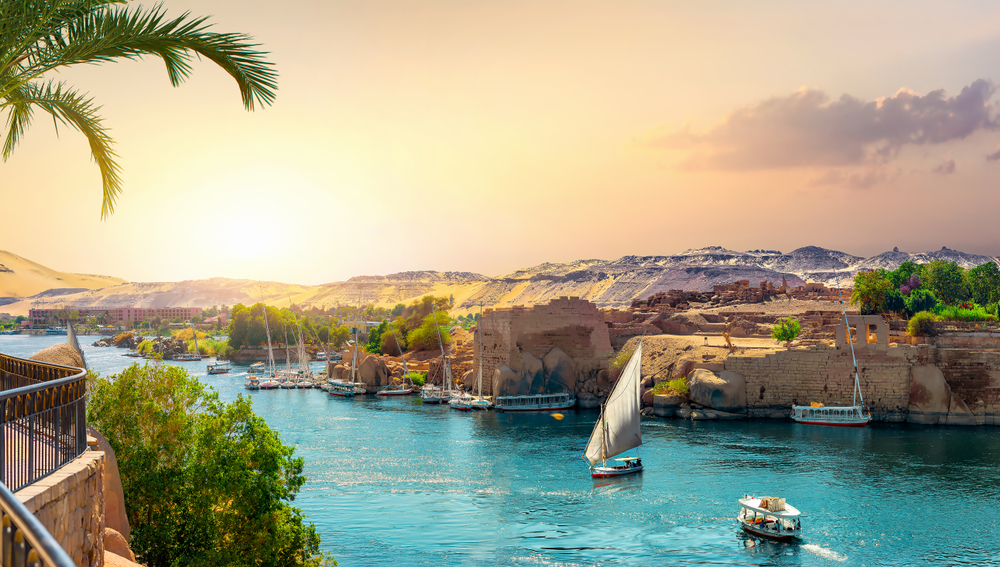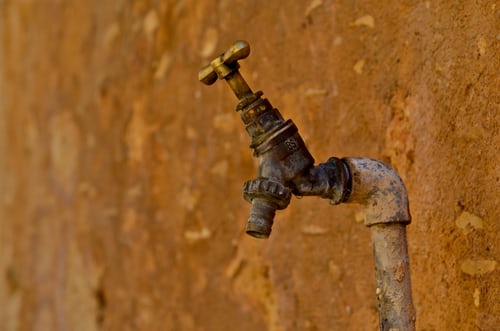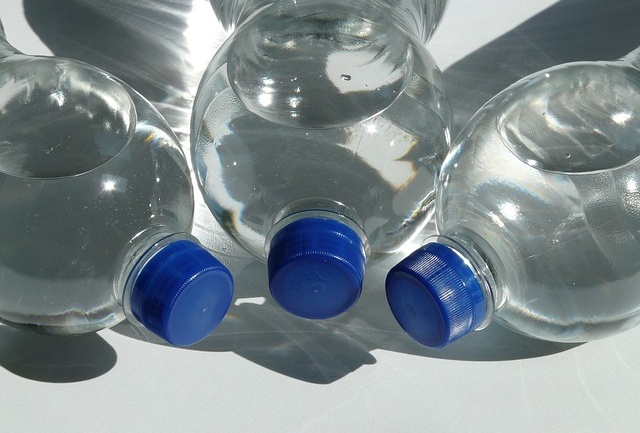By Fady Michael, staff writer for Save The Water™ | April 1st 2014.
The river Nile, the longest river in the world (4,258 miles),1 flows from the lakes of Central Africa to the Mediterranean Sea. Its water resources are shared by eleven countries, namely, Tanzania, Uganda, Rwanda, Burundi, Democratic Republic of the Congo, Kenya, Ethiopia, Eritrea, South Sudan, Sudan and Egypt. Egypt and Sudan are the countries downstream of the river.1
Most cities and citizens of Egypt depend on the Nile as it forms the primary daily source of water. It is necessary for industrial and agricultural needs, drinking and daily use. “Egypt faces an annual water deficit of around 20 billion cubic meters,” stated Khaled Wasef, Irrigation Ministry Spokesman, to Elwady News.2
Besides the population growth and lack of water, there is another huge danger: pollution. Water is polluted when a direct or indirect change occurs in its elements or in its physical or chemical properties. The Nile faces daily pollution problems. There are several sources of pollution into the Nile,3 including industrial wastewater discharge, pesticidal and chemical fertilizer residue from an agricultural application, agricultural water drainage, radioactive discharge, and oil pollution.
A report by the Egyptian Organization for Human Rights titled “Water Pollution: A ticking time bomb threatening the life of the Egyptians” says that approximately 38 million people drink polluted water. It also reports that the amount of untreated or partially treated industrial pollutants that enter the water supply is estimated at about 4.5 million tons per year. It pointed out that the high rates of poisoning cases are caused by pollution from the different cities of Egypt; 35% by Cairo, 12% by Giza, and 50% by Qalyubiyah. According to several reports and studies, on water, 100,000 people are diagnosed with cancer every year, and 15,000 people get kidney failure along with other diseases due to the water pollution in Egypt.4
The pollutants are divided into heavy metals dumped by the factories into the river, while the rest is 10% of sewage remnants from floating hotels. While the President of the Company for Drinking Water in Egypt said that this percentage was harmless due to the flow of the river, the annual report issued by the Environment Affairs Ministry (2008) indicates that the pollution of drinking water has reached a complex stage that is hard to face.4 Reports indicate that 38 million Egyptians drink from sewage polluted waters and that farmlands are irrigated by sewage polluted water as well, leading to the spread of many diseases such as cholera, typhoid, schistosome, and hepatitis.
Egyptian traditions and customs also facilitate the spread of pollution, as they rid their waste by casting it into the river while bathing and cleaning their animals in this same river water. These customs can cause the spread of diseases, especially schistosome.
Mediterranean Sea
Further north, we find pollution has also reached the Mediterranean Sea near the Egyptian coasts.
It is estimated that 720,000,000 tons of sewage, 142,000 tons of mineral oil, 66,000 tons of mercury, 4,200 tons of lead and 40,000 tons of phosphates are dumped into the Mediterranean each year.5
Other major sources of sea water pollution include washing oil tankers with sea water6. The most serious case was when 0.3 % (corrected to 0.1%) of crude oil that was being transported by sea was discharged until 1977 which was 1 million tons of a total of 700 million tons6. That was a whopping 600 tons being spilled per day and these quantities were discharged into the sea by washing vessels. Other unintentional pollution leaks from oil tankers. As for other intended pollution, individuals and sailing boats discard their waste and unneeded belongings by throwing them into the sea.
Mariout Lake and Gulf of Mex
According to an Environment Affairs Ministry report (2010), the Mariout Lake in Egypt is considered a major source of pollution to the Mediterranean Sea via the Gulf of Mex (Egypt).7 The Mariout Lake is one of the main sources for the transfer of pollution from land-based sources into the Gulf of Mex. Maged George, the former Environment Affairs Minister, explained that “there are 7 industrial installations, that are throwing their waste into Mariout Lake, representing about 0.5% of the total industrial wastewater in the lake.” A primary sampling confirmed the “presence of dead fish in the lake”. Experts on the environment and fish biology attributed the fish kills in the lake to a “catastrophic problem” in the water indicating that the lake includes huge amounts of pollutants such as iron, zinc, lead, and phenolic compounds from petroleum sources. This necessitated the development of the Mariout Lake project to reduce the effects of the lake’s pollution and increase fish production.
In 2010, the Environmental Affairs Ministry began the implementation of a project to integrate management of coastal zones in Alexandria by 2015. It is funded by 40 million Egyptian pounds ($5.7 million) from the Global Environment Facility in order to reduce the pollution of Mariout Lake. Through the implementation of this project, the Egyptian government hopes to address this part of the lake water that is being contaminated, restore order and re-establish the bio-environmental system.
Alexandria, one of the largest cities in Egypt, aims to reduce the pollution load on the Mediterranean resulting from the more polluted areas such as from the Gulf of Mex and the Mariout Lake.8 According to Almasry Alyoum newspaper, this is in addition to the protection and renewal of heritage coastlines and reformation systems of the lake by developing a national plan for the management of the coastal zones.8
References
- Magdi M. El-Kammash, Harold Edwin Hurst, & Charles Gordon Smith. 2013. “Nile River.” http://www.britannica.com/EBchecked/topic/415347/Nile-River
- Sally Reteb. 2014, “Irrigation: Egypt is facing an annual deficit of water is estimated at 20 billion cubic meters. And be compensated re-used more than once.” http://elwadynews.com/egypt-news/2014/02/17/20865
- Research Institute of Soil, Water and Environment. Year Unknown. Article: “Water Pollution.”
- The Egyptian Organization for Human Rights. 2009. Report: “Water pollution time bomb threatening the life of the Egyptians.” http://ar.eohr.org/wp-content/uploads/2009/12/d8aad982d8b1d98ad8b1d985d98ad8a7.pdf
- Explore Crete. Year Unknown. “Pollution in the Mediterranean Sea.” Abu Alaa Abdel Moneim. 2011. “The risk of contamination to the environment of the Mediterranean basin.” http://kenanaonline.com/users/MedSea/posts/215744
- Mohammed Abul-Enein. 2010. “40 million pounds to reduce pollution «Marriott». The official report: a major source of lake pollution.” http://www.almasryalyoum.com/news/details/26885
- Mary Rowlatt. 2013. “Alexandria.” http://www.britannica.com/EBchecked/topic/14376/Alexandria




